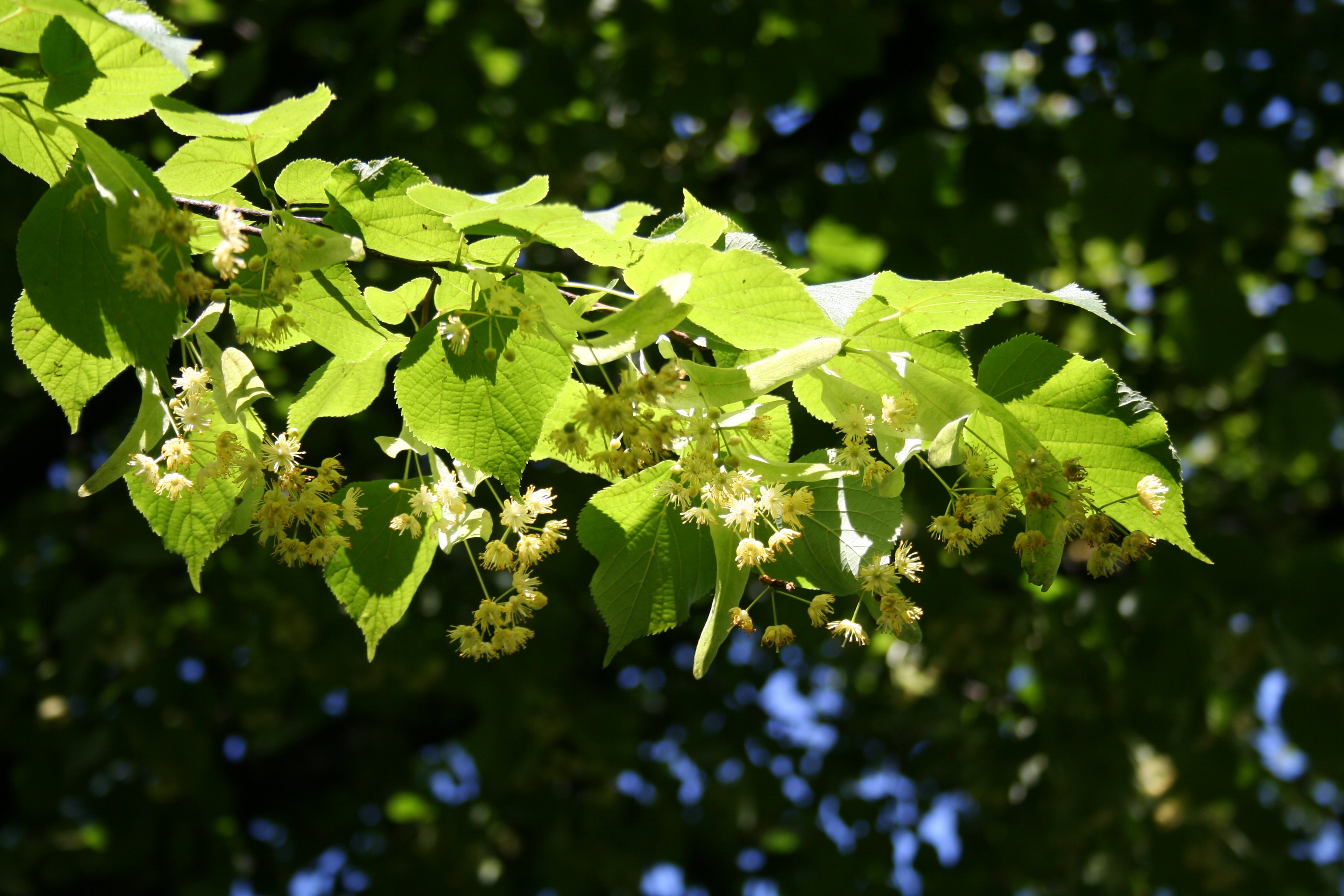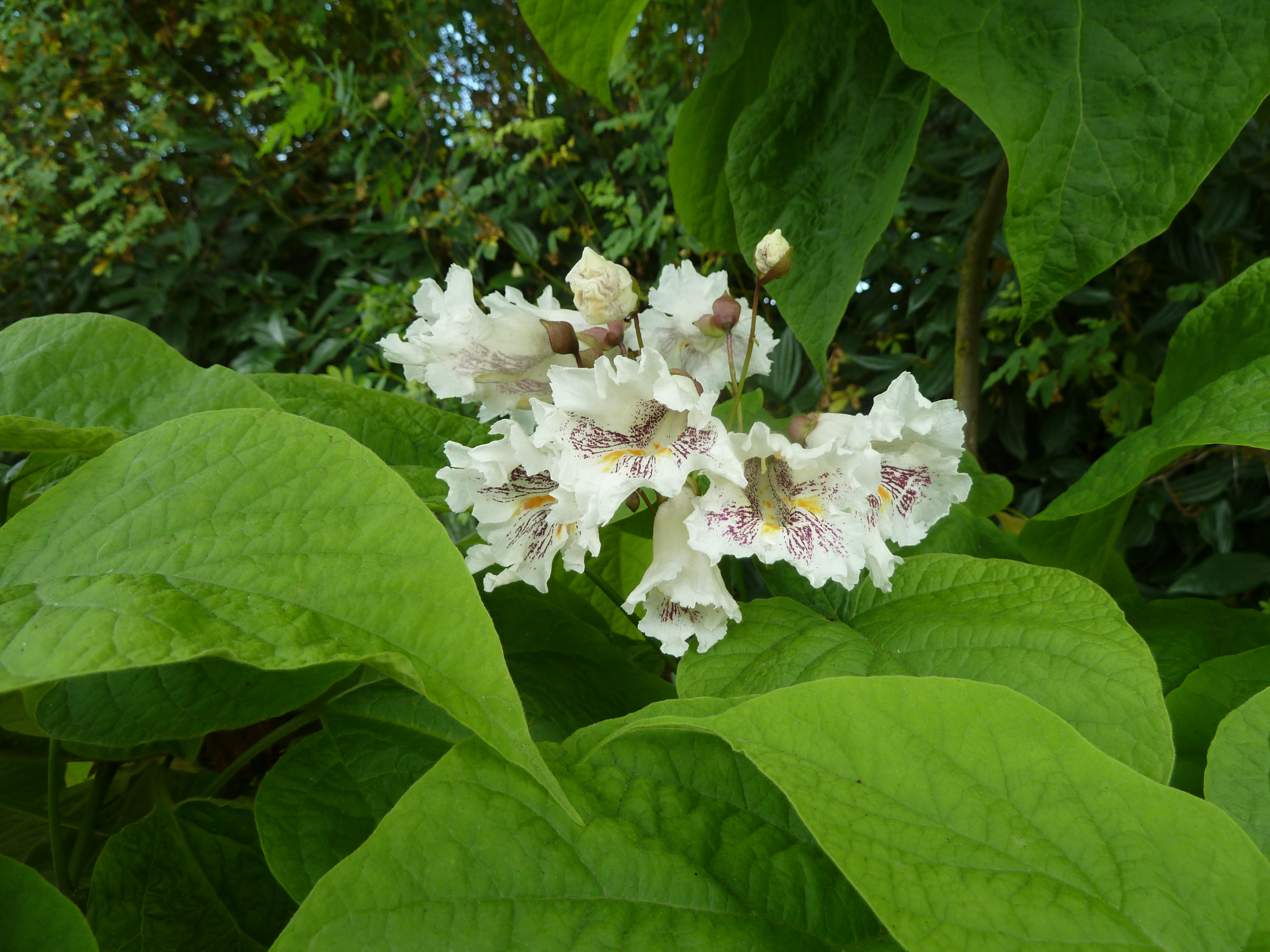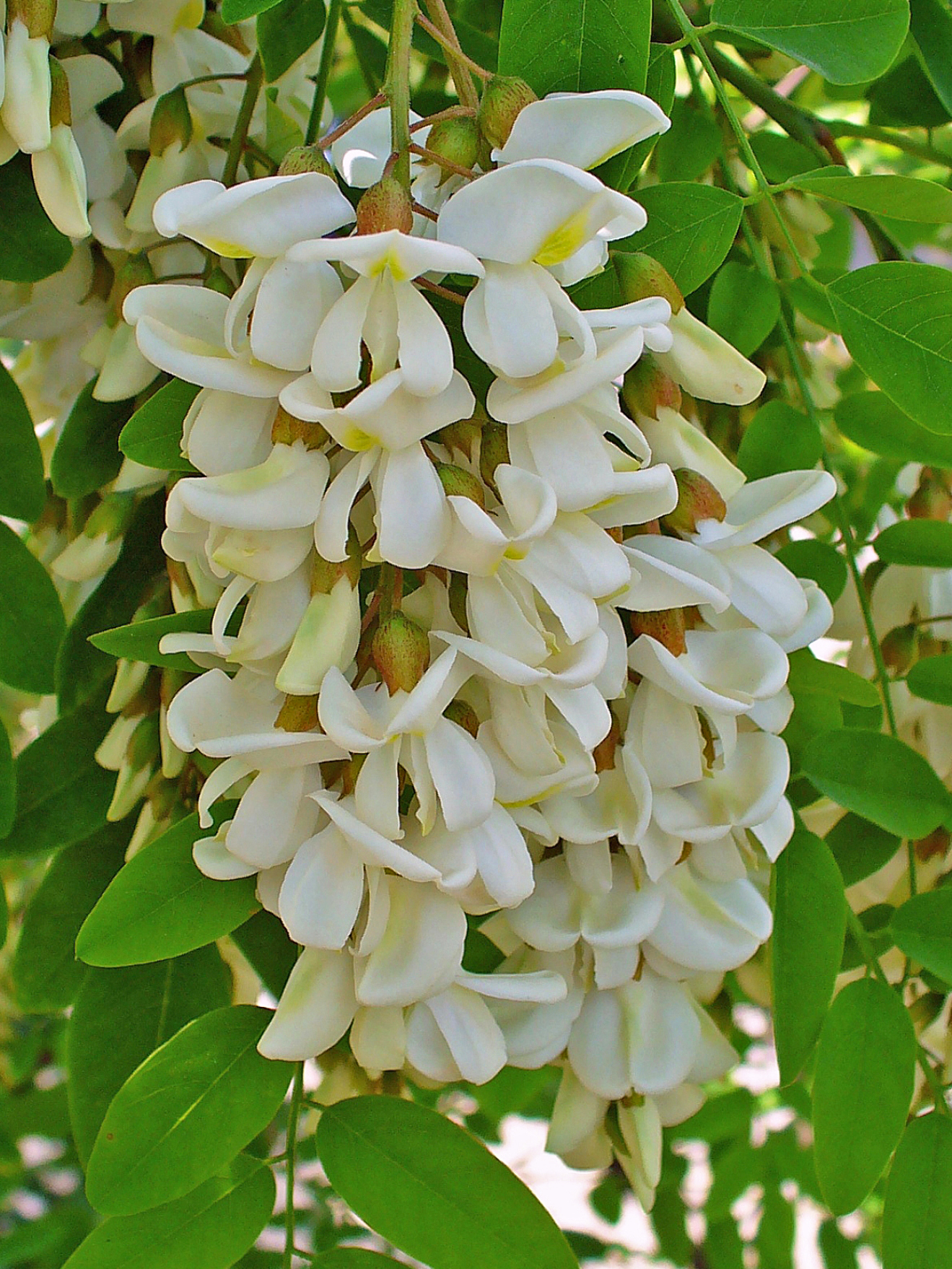This spring we have several trees showing signs of stress that are not particularly attractive. Since last fall, something has happened to them. They leafed out late and/or they have some dead branches throughout the tree. More than likely, it is a result of the historic cold temperatures this winter. But it made me wonder about some other reasons these trees may be stressed this spring.
Why trees?
Trees in Kansas are a luxury and one of your property’s greatest assets. To sit under a mature tree on a warm afternoon, enjoy the blue skies and sip your favorite cool drink is a special experience.
Trees need to withstand the rigors of the climate. Trees block harsh winter winds, give you privacy, delineate boundaries, offer great fall color, attract birds and other wildlife that enhance your enjoyment or your landscape, and increase its resale value. Trees are important for all of these reasons and more, but they are not invincible. At any moment, signs of stress can emerge, so we need to understand and make every effort to alleviate problems that may arise.
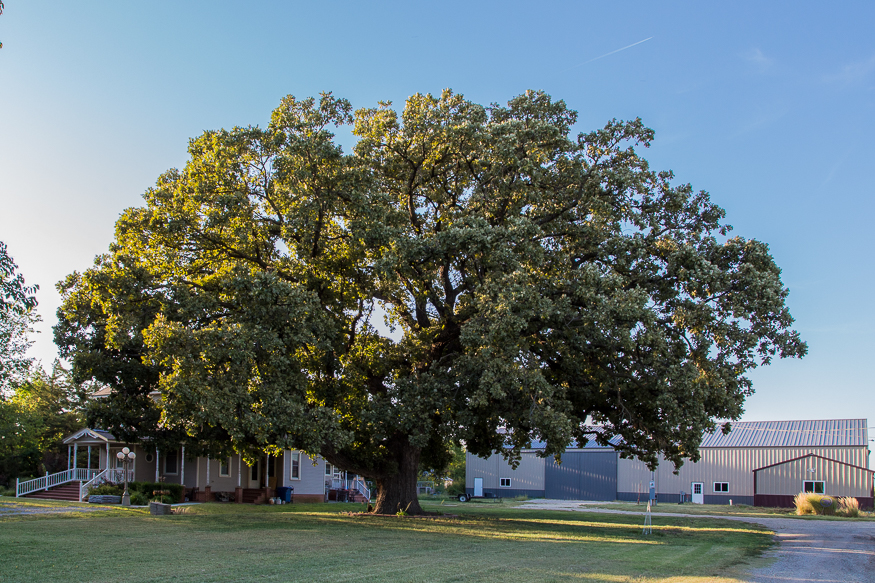
Tree Stress Symptoms
Stressed trees are easy to pick out in the landscape. Symptoms will manifest in a number of ways including flaking bark, secretions, distorted or missing growth, insects, foliage issues, dead branches and lack of vigor.
These symptoms are visual clues to internal, external or environmental stressors. Left untreated, these stressors could ultimately kill your tree. Stressed trees are beacons to insects because they are weaker and vulnerable to attack. Compounding factors over a number of years from the same stressors or multiple stressors lead to tree fatality. Here are some common causes of stress in trees.
Poor Tree Watering Techniques
It is true that trees need water to survive, but they need just the right amount of water. Too much or too little can cause a tree to be under stress. These problems can be compounded when planted in our clay soils. Defoliation, yellowing of the leaves and branch die back are all symptoms to avoid. Most trees, if properly situated, can withstand seasons of drought without much extra inputs.
Monitor trees during stressful times such as drought to make sure they don’t need a deep soaking. Keep in mind that waterlogged soils are more problematic than drier soils because proper air exchange by the roots in hindered by extremely wet conditions. Sometimes we see a tree under stress from drought and do more damage by giving it too much water. Give it a deep soaking, but let it dry out between watering.
Install the tree properly
One of the first lessons I learned as a novice horticulturist is how to plant a tree. “How hard can it be?”, you may say. Just dig a hole, put it into the ground, water it for a while and watch it grow. More trees are killed by improper installation than you might realize. Choosing the right tree for the soil conditions, along with understanding mature size, will go a long way to helping that tree survive and thrive.
In our clay soils, I plant the root flair a few inches higher than the soil line in a hole that is at least twice the size of the root ball. I make a small basin around the tree that makes it easier to water and then lightly mulch the basin. It is important to keep mulch away from the trunk of the tree. I stake the tree for the first year and remember to remove the wires that will eventually girdle the tree if forgotten.
For some additional tips on how to properly plant trees, check out my blog post “Steps to Planting a Tree”.
Beware Lawn mowers and Weed eaters
Anything you can do to keep mowers and weed eaters away from the trunk of trees is vitally important. I have seen too many tree trunks damaged by mowers bumping them and people string trimming around the base of the tree, trying to cut down every sprig of grass. A small two to three foot mulch ring provides just the right buffer between the trunk and lawn. I have seen a string trimmer completely girdle the soft bark of a maple tree and kill it in a couple weeks. If you have invested in a tree, protect it from these tree killers.
Mulch Around Trees Properly
The advantages of mulch around trees are obvious. It is one of the easiest things to do and it improves the aesthetics of the landscape. However, too much mulch, mulch touching the trunk, or mulch volcanos around your trees could cause major tree stress. These stressors are totally avoidable with one to two inches of mulch around the trunk, but not touching the trunk. It is important to keep the mulch several inches away from the trunk. Too much mulch will cake up and seal off the soil, impeding proper air exchange by the roots.

Improper Tree Pruning
Pruning your trees as they mature is a necessary function. I generally prune our deciduous trees during the winter when they are dormant, making sure not to remove more than 1/3 of the growth at a time. Proper timing will allow the tree to begin to heal without opening up the tree to potential diseases and pests. Evergreen trees can be pruned any time but I avoid the hottest part of the year.
Construction Injuries to Trees
Trees often suffer during and after construction projects. Compacted soils and branch or trunk damage can stunt the growth for several years after the project has been completed. It often takes years for compact soils to improve. I killed several nice maple trees after our Visitor Center was constructed because the soil was too compacted. The soil would not drain and they were essentially planted into an undraining bowl. The roots were completely surrounded by water and they drowned and stunk when I pulled the dead trees out. Remember to protect/ fence off any trees you want to save during a construction project.
Environmental Injuries
There are so many nice trees and shrubs from which to choose. We often push the hardiness zones to grow trees that are borderline hardy in our area. As I mentioned earlier, we have a sawtooth oak and gingko that suffered damage from the extreme cold earlier this year. The are coming out of it, but they will look tough for a few years. These trees are not native and remind me to choose native plants first. It also reminds me to be aware of the hardiness of plants we install. Match plants up to your site, including sun, soil, exposure, hardiness, mature size, and moisture.
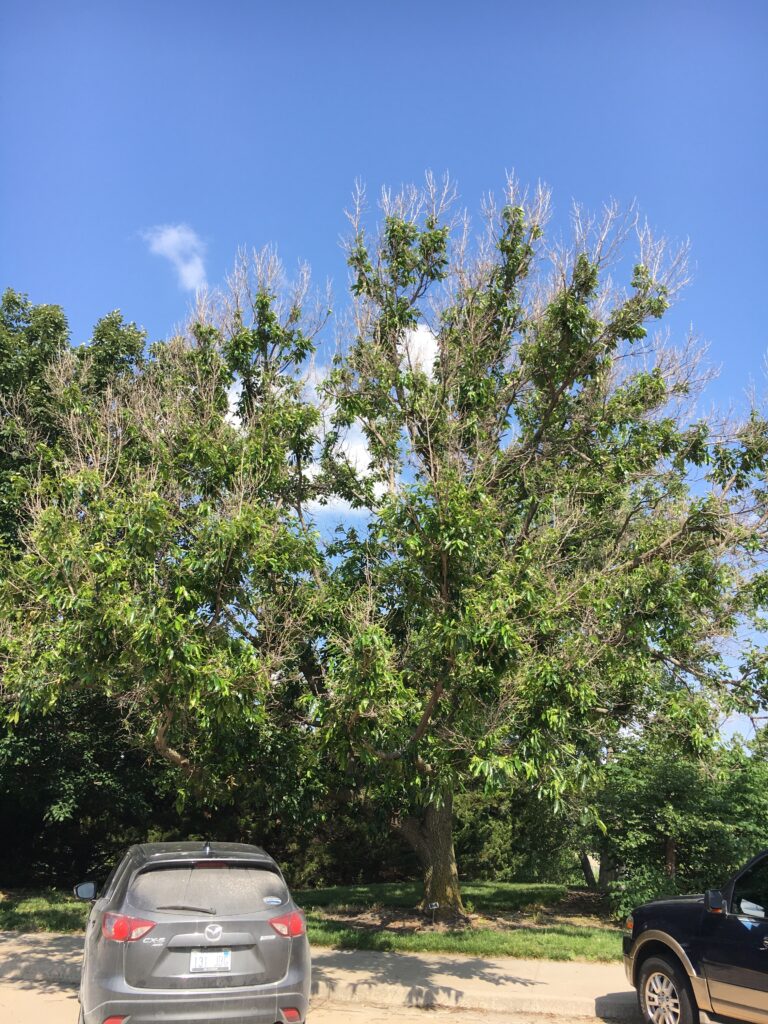
Trees are resilient, but we can help them by considering their needs. A little homework before planting can alleviate problems through the years. Trees are alive and ultimately affected by so many factors, some of which are out of our control. Who know what the next pest will be? Who knows when the next drought will occur? All we can do is try to create/match an environment conducive to growth.

